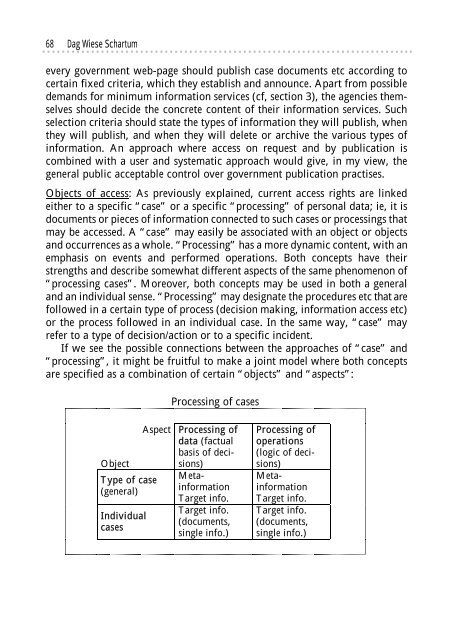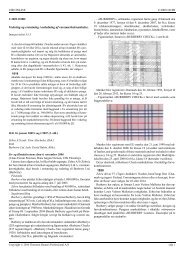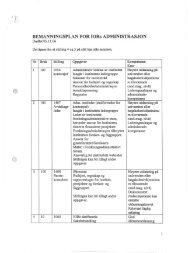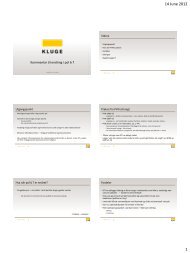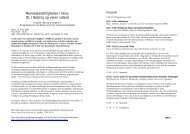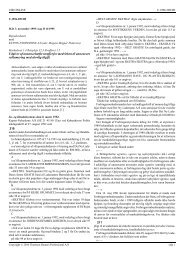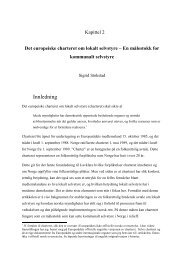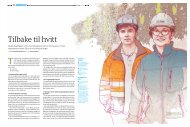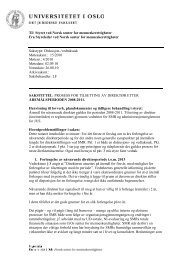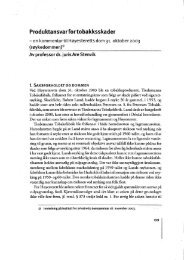Lee A. Bygrave (red.) YULEX 2002 - Universitetet i Oslo
Lee A. Bygrave (red.) YULEX 2002 - Universitetet i Oslo
Lee A. Bygrave (red.) YULEX 2002 - Universitetet i Oslo
You also want an ePaper? Increase the reach of your titles
YUMPU automatically turns print PDFs into web optimized ePapers that Google loves.
............................................................................<br />
68 Dag Wiese Schartum<br />
every government web-page should publish case documents etc according to<br />
certain fixed criteria, which they establish and announce. Apart from possible<br />
demands for minimum information services (cf, section 3), the agencies themselves<br />
should decide the concrete content of their information services. Such<br />
selection criteria should state the types of information they will publish, when<br />
they will publish, and when they will delete or archive the various types of<br />
information. An approach where access on request and by publication is<br />
combined with a user and systematic approach would give, in my view, the<br />
general public acceptable control over government publication practises.<br />
Objects of access: As previously explained, current access rights are linked<br />
either to a specific “case” or a specific “processing” of personal data; ie, it is<br />
documents or pieces of information connected to such cases or processings that<br />
may be accessed. A “case” may easily be associated with an object or objects<br />
and occurrences as a whole. “Processing” has a more dynamic content, with an<br />
emphasis on events and performed operations. Both concepts have their<br />
strengths and describe somewhat different aspects of the same phenomenon of<br />
“processing cases”. Moreover, both concepts may be used in both a general<br />
and an individual sense. “Processing” may designate the procedures etc that are<br />
followed in a certain type of process (decision making, information access etc)<br />
or the process followed in an individual case. In the same way, “case” may<br />
refer to a type of decision/action or to a specific incident.<br />
If we see the possible connections between the approaches of “case” and<br />
“processing”, it might be fruitful to make a joint model where both concepts<br />
are specified as a combination of certain “objects” and “aspects”:<br />
Object<br />
Aspect<br />
Type of case<br />
(general)<br />
Individual<br />
cases<br />
Processing of cases<br />
Processing of<br />
data (factual<br />
basis of deci-<br />
sions) <br />
Metainformation<br />
Target info.<br />
Target info.<br />
(documents,<br />
single info.)<br />
Processing of<br />
operations<br />
(logic of deci-<br />
sions) <br />
Metainformation<br />
Target info.<br />
Target info.<br />
(documents,<br />
single info.)


